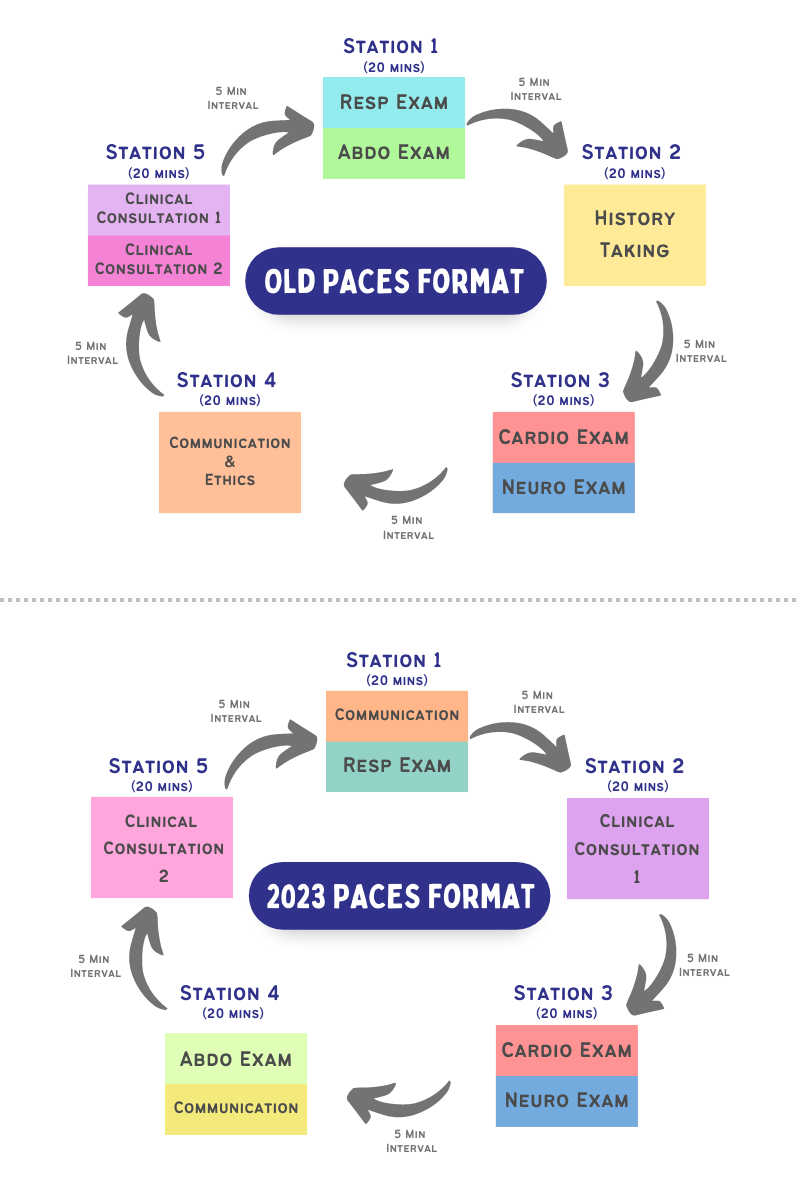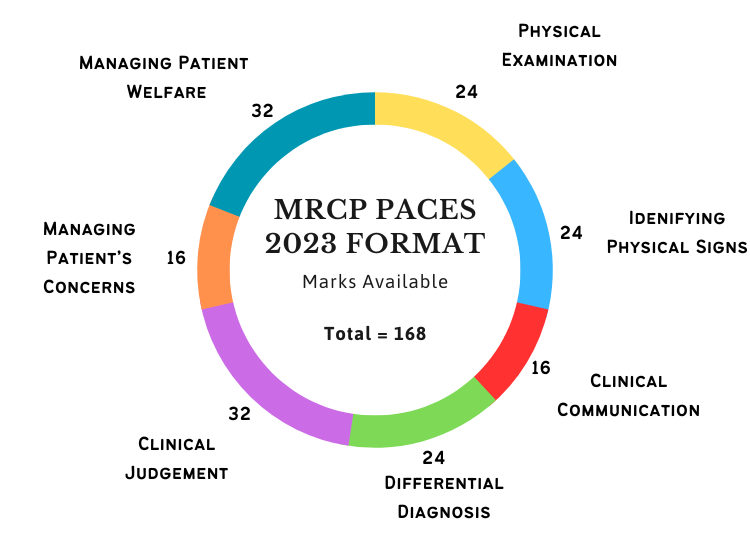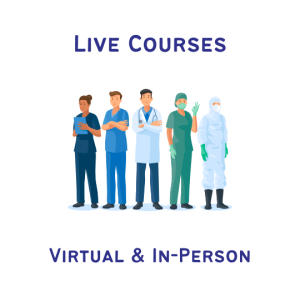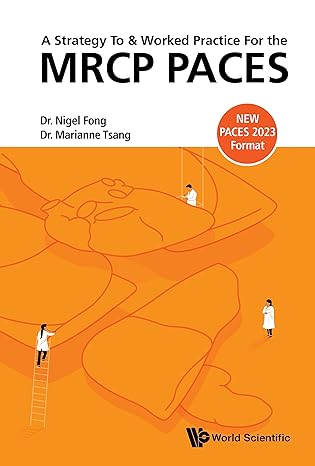
Published July 6, 2023 | Updated April 16, 2024
By David T. Otuonye
David is an IMT junior doctor with an interest in Endocrinology. He enjoys all things basketball, film and RnB music.
The MRCP PACES examination is a challenging but essential part of the journey to getting your training number as a higher medical speciality trainee in the UK. The exam assesses a wide range of clinical skills, including history-taking, examination, communication, and decision-making. It requires a significant effort in revision and preparation.
The PACES exam can be taken after you’ve succeeded in your MRCP Part 1 and can be taken before or after the written section of MRCP Part 2.
In 2023, the PACES exam format will be changing. The new format will include two 10-minute communication encounters and two 20-minute clinical consultations. The communication encounters will no longer include a question-and-answer section with the examiners, and the clinical consultations will be more realistic and integrated.
These changes are designed to make the exam more fair, relevant, and fit for purpose, reflecting the new Internal Medicine stage 1 curriculum.
In this article, we will be discussing the details and structure of the new MRCP PACES exam format, answering your questions on the changes, the marking scheme, and the stations.
Why is the Format Changing?
Since the introduction of the current MRCP Practical Assessment of Clinical Examination Skills (PACES) format over 10 years ago, postgraduate medical education in the United Kingdom has seen major changes.
To accurately reflect these changes in medical education and training, the Federation of Royal Colleges of Physicians of the UK has introduced the new PACES exam format starting from the third diet of 2023, now named PACES23 (Please note that PACES23 will be introduced for candidates sitting in Singapore from early 2024).
Understandably, this may seemingly add another level of stress to candidates preparing to sit the already stressful PACES exam! However, despite the format change, the aim of the exam essentially remains the same: to aid in the development of responsible and knowledgeable physicians with sound clinical judgement and diagnostic ability.
What Remains the Same?
As per the MRCP (UK) website, the same seven clinical skills are still being tested (more below in the Marking Scheme section). The exam remains a five-station carousel, with 20 minutes per station lasting a total of approximately 125 minutes.
There will be two independent examiners in each station. Candidates will still have the opportunity to read the vignette/instruction of the station that awaits them during the five-minute interval between stations.
Resources Updated for the 2023 Format
You can find a full list of the best available resources in our article on books, courses, and websites for PACES. All in-person PACES courses should be up-to-date for 2023. Here’s a list of books and online resources that have been updated for the 2023 format:
On-Demand Courses
Note that we get a commission on sales of these resources to pay the bills, thus have a bias! Make sure you read around for outside opinions on these resources.
Pastest MRCP PACES Video Resources
A collection of videos with a huge range of patient conditions, including many you might struggle to find in “real life”, with demonstrations of model techniques and answers.
Click via our affiliate link and use the code MEDCOURSE10 to get 10% off your subscription! (and help pay our bills)
Clinical Skills Pro Video Course
An on-demand course which includes plenty of cases, videos, quizzes, and practice carousels. You can also practise the identification of signs with their videos and animations on JVP abnormalities, eye signs, and heart murmurs.
Quesmed MRCP PACES Videos
Quesmed have created 100+ gold standard exam videos, alongside a PACES textbook and group study function. You can also use their app offline and track your progress.
Check out their PACES videos here, or use our promo code MEDCOURSE15 for 15% off your subscription.
Books
Purchase these at your own risk! As relatively new books, they do not have many reviews when this article was updated (4 Oct 2023)
*Note – To pay our website costs, we earn commissions from any purchases via these links.
250 Cases in Clinical Medicine
by Eirini V Kasfiki, Ciaran WP Kelly
A Strategy To and Worked Practice For the MRCP PACES
by Nigel Fong and Marianne Tsang
Changes in the PACES Format
It is mainly the encounters in some stations which have undergone changes. Some stations have been removed and/or restructured altogether.
The following stations have been removed:
The following changes have now been introduced:
To illustrate all the above, these diagrams depict the 5-station carousel in the current MRCP PACES format and the 5-station carousel in the new PACES23 format:

MRCP PACES Marking Scheme 2023
The PACES marking scheme uses a three-point grading structure. Examiners grade candidates on each of the 8 encounters across the five stations one of Satisfactory (2 marks), Borderline (1 mark) or Unsatisfactory (0 marks).
The exam assesses seven clinical skill domains, as shown in the tables below. Candidates must pass all seven skills AND meet the overall minimum score to pass PACES. According to the MRCP(UK) website, the total marks available in the PACES23 exam is 168. A score of 113 is required to pass all seven skills but a score of at least 127 is needed to pass overall in the PACES23 exam.
| Clinical Skill | Skill Descriptor | |
| A | Physical Examination | The candidate displays correct, thorough, systematic (or focused in Station 5 encounters), appropriate, fluent, and professional physical examination techniques. |
| B | Identifying Physical Signs | The candidate accurately identifies physical signs and does not report physical signs that are not present. |
| C | Clinical Communication | The candidate obtains a clinical history relevant to the patient’s complaints, in a systematic, thorough, fluent and professional manner. Relevant clinical information is explained in an accurate, clear, structured, comprehensive, fluent and professional manner. |
| D | Differential Diagnosis | The candidate formulates an appropriate differential diagnosis for a patient following clinical assessment. |
| E | Clinical Judgement | The candidate selects a sensible and appropriate management plan for a patient, relative or clinical situation, applying clinical knowledge (including knowledge of law & ethics) to the case. Appropriate investigations or treatments are selected. |
| F | Managing Patients’ Concerns | The candidate seeks, acknowledges and addresses patients’/relatives’ concerns, confirming their understanding of the matter using active listening and demonstrating empathy. |
| G | Maintaining Patient Welfare | The candidate treats a patient or relative respectfully, sensitively and with dignity. |

This table illustrates the minimum marks required to pass each clinical skill domain:
| Skill | Pass mark/Total Marks (% of marks available) | |
| A | Physical Examination | 16/24 (66.6%) |
| B | Identifying Physical Signs | 14/24 (58.3%) |
| C | Clinical Communication | 11/16 (68.7%) |
| D | Differential Diagnosis | 15/24 (62.5%) |
| E | Clinical Judgement | 19/32 (59.3%) |
| F | Managing Patient’s Concerns | 10/16 (62.5%) |
| G | Managing Patient Welfare | 28/32 (87.5%) |
A helpful tip to remember is that just because you may have performed poorly in one station, that does not necessarily mean you will perform poorly in the next station, or even overall.
As difficult as it may be in the moment, try your best to focus on the next station in front of you during the five-minute break, rather than ruminating on previous stations.
MRCP PACES Station 1
Station 1 Format
Originally, this station consisted of two physical examination encounters of ten minutes each – a Respiratory physical examination, followed by an Abdominal examination.
In the new PACES23 format, station 1 will now consist of one communication encounter of ten minutes duration and a respiratory examination encounter also of ten minutes duration.
The communication scenario is likely to be one involving ethics, common UK medicolegal issues, and/or assessing generally how well the candidate communicates a medical diagnosis to a patient or relative.
As aforementioned, there is no candidate-examiner viva component. Marks will be awarded based on the examiners’ observations only. After eight minutes in this encounter an advisory warning of two minutes will be given to the candidate.
We will expand on this encounter later in the communication skills section of this article.
In the respiratory physical examination encounter (and all physical examination encounters in the exam), a maximum of 6 minutes is allowed for the examination of the patient. This is followed by four minutes of discussion between the candidate and examiner. This usually consists of presenting the clinical findings, the likely diagnosis (or differential diagnosis), suitable investigations and a sensible management plan.
Example MRCP PACES Respiratory Scenarios
Examples of possible Respiratory case written instructions:
Top Tips for the Respiratory Examination Encounter
MRCP PACES Stations 2 and 5
Clinical Consultation Stations Format
As the pure history-taking station 2 and the two integrated encounters of Station 5 are now removed, in the PACES23 format candidates will get one 20-minute encounter in both Station 2 and 5. These are the longest stations and can be viewed as ‘long case’ stations.
Candidates are allowed 15 minutes to do a combination of structured history taking, focused physical examination, explanation of their diagnosis and coming up with a management plan. Throughout this, they should also address the patient’s concerns and questions. A 2-minute warning is given by examiners when 13 minutes have elapsed. Candidates will then have a 5-minute discussion with the examiner.
All seven clinical skill domains are assessed in stations 2 and 5 which make up over one-third of the marks for the whole examination. Consequently, it becomes increasingly difficult to pass the MRCP PACES if a candidate performs poorly in these stations.
Fortunately, one could argue that these stations are now more ‘candidate friendly’ – there is more time in the station and these stations seem to be more representative of the ‘real life’ clinical consultations done by SHOs and SpRs daily in the NHS.
According to the MRCP(UK) website, these stations may involve assessing the patient/surrogate in an acute setting, such as Medical Assessment Unit, or a less acute setting such as an outpatient clinic. It follows that the likely cases that one would expect to be tested on here are common presenting complaints you would see on the acute medical take, or conditions with multisystem involvement (rheumatology, endocrine, dermatology cases etc).
Example MRCP PACES Clinical Consultation Scenarios
Examples of possible written instructions for these encounters:
Top Tips for Stations 2 and 5
MRCP PACES Station 3
Station 3 Format
This station remains unchanged in the new format. It consists of a cardiology examination encounter and a neurology examination encounter, each lasting ten minutes – six minutes for physical examination and four minutes for discussion with the examiner.
Example MRCP PACES Cardiology Scenarios
Examples of possible cardiology case written instructions:
Top Tips for the Cardiovascular Examination Encounter
Example MRCP PACES Neurology Scenarios
Examples of possible neurology case written instructions include:
Top Tips for the Neurology Examination Encounter
MRCP PACES Station 4
Station 4 Format
This station used to be the communication skills and ethics station, lasting 20 minutes. In the PACES23 format station 4 is now made up of one communication encounter of ten minutes duration and a ten-minute abdominal examination encounter (similar format to station 1).
Example MRCP PACES Abdominal Scenarios
Example of possible abdominal case written instructions:
Top Tips for the Abdominal Examination Encounter
Communication Skills and Ethics
Excellent communication skills and a good knowledge of ethical and medicolegal frameworks are essential in providing good medical care to patients. In stations 1 and 4 this is assessed in a ten-minute scenario.
In this encounter, the candidate is expected to show empathy, discuss further management of the case with the patient/surrogate and deal with ethical and legal implications as they arise.
Of the seven clinical skills, the examiners are particularly looking at Clinical Communication, Clinical Judgement and Managing Patient Concerns.
Example MRCP PACES Communication Skills and Ethics Scenarios
The cases candidates may get can vary widely, but they generally can fall under the following categories:
It is important to note that although the above categories are a helpful guide, candidates can get a combination of these in the same communication encounter.


















